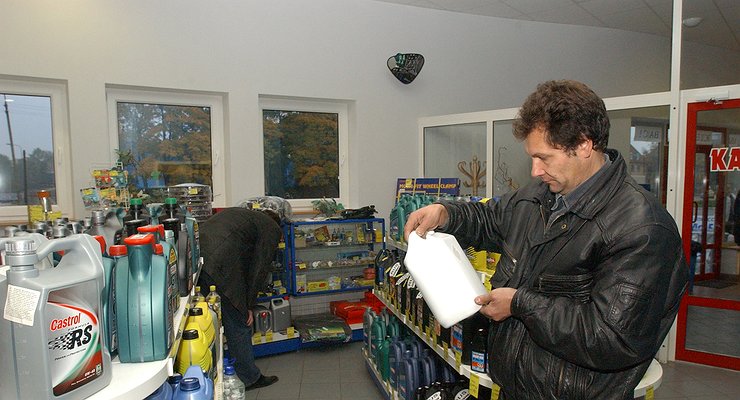Which oil is more dangerous for a car engine in winter: 5W30 or 5W40
- December 9, 2022
- 0
Reflections on the topic “which oil is best for the winter” is the standard train of thought for many car owners in the cold season. Sometimes it leads
Reflections on the topic “which oil is best for the winter” is the standard train of thought for many car owners in the cold season. Sometimes it leads

Any motorist who somehow understands the mechanics of what is happening under the hood understands: the performance of the device in certain conditions directly depends on the properties of the oil poured into the engine. Especially in winter, when the engine starts cold every day, the engine is put to the test.
In such conditions, the car owner sometimes remembers that at the last MOT he poured “more summery” (it is believed) oil into the engine. For example, instead of the standard and recommended by the manufacturer 5W30 – more advanced, with the characteristics of 5W40.
The numbers 30 and 40 in the oil classification according to the SAE standard indicate the kinematic viscosity of the lubricant at a temperature of +100°C. For “30” it should be in the range of 9.2-12.7 mm² / s, and for “40” – 12.7-16.4 mm² / s. In other words, 5W40 has one and a half times higher kinetic viscosity than 5W30 when heated. Increased viscosity is useful for better lubrication at high loads on the drive unit, when overheating is imminent. But with regard to winter conditions, in theory, we should not be interested in high-temperature viscosity, but in low-temperature viscosity: in the present case it is “5W”.
Formally, the number “5” in this context indicates that the lubricant remains sufficiently fluid and efficient down to -35°C. Higher resistance to thickening, according to the standard SAE tables, only oils with the 0W index have. They are designed for use at -40°C. However, do not think that our 5W30 and 5W40 will definitely freeze in forty degrees of frost.
Few people know, but the temperature tolerances described above certainly work only in the case of mineral oils and “semi-synthetics” in which “mineral water” is present. Practice shows that fully synthetic lubricants are much more resistant to freezing. For example, have you heard that there is a “plastic” with the characteristics of 10W40, but which does not freeze even at -50°C? And she is!
Therefore, even in the most Siberian cold, it is not at all necessary to pour 0W20 series oil into the engine. High quality synthetic 5W30 and 5W40 will do their job well in severe cold. Another thing is that the increased high temperature viscosity of 5W40 is preferable when operating the engine at high loads and with the risk of overheating. And this can happen at any time of the year, even in winter.

Any motorist who somehow understands the mechanics of what is happening under the hood understands: the performance of the device in certain conditions directly depends on the properties of the oil poured into the engine. Especially in winter, when the engine starts cold every day, the engine is put to the test.
In such conditions, the car owner sometimes remembers that at the last MOT he poured “more summery” (it is believed) oil into the engine. For example, instead of the standard and recommended by the manufacturer 5W30 – more advanced, with the characteristics of 5W40.
The numbers 30 and 40 in the oil classification according to the SAE standard indicate the kinematic viscosity of the lubricant at a temperature of +100°C. For “30” it should be in the range of 9.2-12.7 mm² / s, and for “40” – 12.7-16.4 mm² / s. In other words, 5W40 has one and a half times higher kinetic viscosity than 5W30 when heated. Increased viscosity is useful for better lubrication at high loads on the drive unit, when overheating is imminent. But with regard to winter conditions, in theory, we should not be interested in high-temperature viscosity, but in low-temperature viscosity: in the present case it is “5W”.
Formally, the number “5” in this context indicates that the lubricant remains sufficiently fluid and efficient down to -35°C. Higher resistance to thickening, according to the standard SAE tables, only oils with the 0W index have. They are designed for use at -40°C. However, do not think that our 5W30 and 5W40 will definitely freeze in forty degrees of frost.
Few people know, but the temperature tolerances described above certainly work only in the case of mineral oils and “semi-synthetics” in which “mineral water” is present. Practice shows that fully synthetic lubricants are much more resistant to freezing. For example, have you heard that there is a “plastic” with the characteristics of 10W40, but which does not freeze even at -50°C? And she is!
Therefore, even in the most Siberian cold, it is not at all necessary to pour 0W20 series oil into the engine. High quality synthetic 5W30 and 5W40 will do their job well in severe cold. Another thing is that the increased high temperature viscosity of 5W40 is preferable when operating the engine under increased load and risk of overheating. And this can happen at any time of the year, even in winter.
Source: Avto Vzglyad
Donald Salinas is an experienced automobile journalist and writer for Div Bracket. He brings his readers the latest news and developments from the world of automobiles, offering a unique and knowledgeable perspective on the latest trends and innovations in the automotive industry.